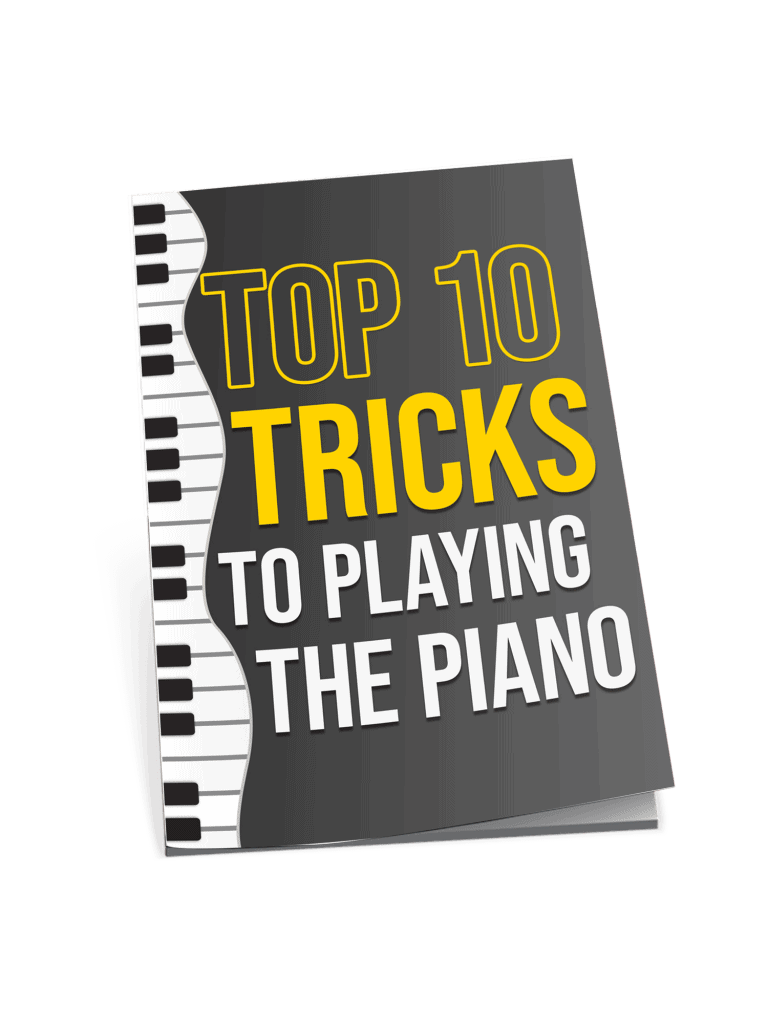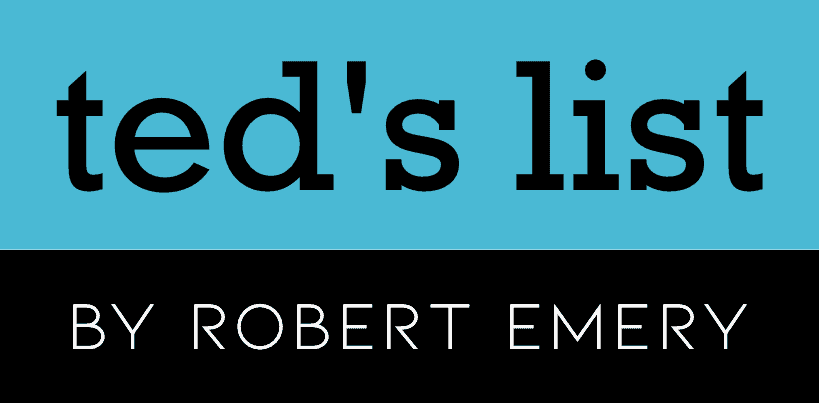Best
Overall Beginner Digital Piano
-
Overall: Has a Graded Hammer Standard (GHS) mechanism and has keytops with a non-glossy finish
-
Best Feature: You can add expression to your playing with 88 keys that have weight
-
TedScore™: 10/10
Best
for Budget-Pick for Beginners
-
Overall: Includes a duet mode for two persons to play at the same time
-
Best Feature: Play multiple buttons with 88 weighted keys with 64 polyphony
-
TedScore™: 7/10
Best
Portable Piano
-
Overall: Provides the same high-quality sound as their top-notch grand pianos
-
Best Feature: Comes with powerful, high-resonance speakers
-
TedScore™: 8.6/10
Do you ever wonder ‘is piano is a string instrument’?
This debate has been going on for years and is not always clear-cut. Some argue that the piano is a percussion instrument, while others insist it’s a string instrument.
So, which is it?
In this article, we’ll get to the bottom of it!
So make sure to keep reading and get your long-awaited answer!
What is a String Instrument?
A string instrument is a musical instrument that creates sound by vibrating strings. The strings may be made of metal, animal gut, silk, or other materials such as plastic or nylon. When the strings vibrate, they produce a sound amplified by a resonating chamber or soundboard.
String instruments are classified as chordophones in the Hornbostel-Sachs classification system. This means that they produce sound by vibrating strings stretched between two points. Examples of chordophones include the guitar, harp, and piano.
String instruments come in all shapes and sizes, from the small and portable xylophone to the large and imposing upright piano. They’re used in various musical genres, from classical and jazz to pop and rock.
One of the unique features of string instruments is their dynamic range. They can also produce sounds with both soft, delicate melodies and loud, powerful tones. This is due to the tension of the strings and the materials used to construct the instrument.
The Piano

The Piano is an excellent choice if you’re looking for a musical instrument that can produce a wide range of sounds. It’s a keyboard instrument that’s been around for centuries and is still the most widely used system today.
But is the piano a string instrument?
Let’s explore the parts of the piano and how it works to find out.
Parts of the Piano
The piano comprises many parts, including keys, hammers, and strings. The keys fixed strings are what you press to make the piano produce sound.
Pressing a key causes a hammer to strike a string, vibrate and produce sound. The hammers are covered in felt to produce a softer sound when they strike the strings.
Is the Piano a String Instrument?
Classification of the Piano
Many wondered, “Is a piano a string instrument?”
To begin with, let’s take a closer look at what exactly we mean by the term “string instrument”.
According to the Hornbostel-Sachs classification system, string instruments produce sound utilizing vibrating strings. This includes instruments with multiple strings like the guitar, harp, and violin.
The Piano as a Percussion Instrument
On the other hand, the piano is often classified as a percussion instrument.
Inside a piano are strings and a row of hammers covered with felt. In the traditional way of categorizing musical instruments, the piano is seen as a type of chordophone, like a lyre or a harp, because strings are stretched between two points that produce sound when they vibrate.
However, the piano is also a percussion instrument because the tones are produced by felt-covered hammers striking strings in the piano, creating a rich and resonant sound characteristic of this keyboard instrument like other string instruments. Therefore, the piano is now seen as a string and percussion instrument.
The piano also shares many characteristics with other percussion instruments, such as the xylophone or drums. Piano and percussion can also be a part of a string orchestra.
The Piano as a String Instrument
However, it’s also true that the piano does rely on vibrating strings to produce sound. The strings of a piano give it its unique sound and tone. The tension of the strings, the materials they are made of, and the way they are processed and assembled all contribute to the piano’s distinctive sound.
While the piano may not fit neatly into either category, it is generally a hybrid instrument and considered to be both a stringed and a percussion instrument. Its large range, dynamic ranges, and unique sound make it one of the most popular instruments in the world, used in everything from classical music to pop and rock.
The Sound of the Piano
When you play the piano, you create a beautiful, powerful, and soothing sound. This sound is made possible by the instrument’s unique design, which incorporates various materials and techniques to create sound and produce a rich, vibrant tone.
In this section, we’ll explore the science behind the sound of the piano, including the vibrating strings and the soundboard.
The Vibrating Strings

At the heart of the piano’s sound are the vibrating strings inside. These strings are made of metal or plastic and are stretched tightly across the instrument’s frame. When you strike a key, a hammer inside the piano hits the corresponding string, causing it to vibrate. This vibration creates sound waves that travel through the air and into your ears, producing the beautiful sound of the piano.
The tension of the strings is critical to the piano’s sound. The strings must be tuned to the correct pitch, and the tension must be carefully adjusted to ensure the sound is clear and balanced across all the keys. This is a difficult and precise technique that requires a skilled technician.
The Soundboard

The soundboard is another important component of the piano’s sound. This large piece of wood sits underneath the strings and helps to amplify the sound. When the strings vibrate, they transfer their energy to the soundboard, which vibrates in sympathy. This vibration amplifies the sound and gives the piano its unique tone.
The size and shape of the soundboard are critical to the piano’s sound. A larger soundboard will produce a louder, richer sound, while a smaller soundboard will produce a softer, more delicate sound. The materials used to make the soundboard are also important. Hardwoods like spruce and maple are commonly used because they are strong and resonate well.
3 Best Student Pianos

DESIGNED FOR: beginners to intermediate players
FEATURES: Has a Graded Hammer Standard (GHS) mechanism and has keytops with a non-glossy finish
OTHER INFO: A Yamaha CFX concert grand piano sound is incorporated as a pre-installed option
Yamaha YDP 145 Digital Piano
When you check the price above, you’ll see there are loads of great places to buy this item. Our personal favorite is Gear4music.
It is the largest music retailer in the UK and fast becoming the most respected online music shop in the US too. Their customer service is excellent, they have competitive prices, really fast shipping, and usually have the longest guarantee.
Most professional musicians use Gear4music, so there is no reason why you shouldn’t too!
- You can add expression to your playing with 88 keys that have weight
- Creates a genuine sound and playing experience
- With easy-to-navigate design and interface
- No Bluetooth connection
The professional musician who wrote this article combined many things,
from the product build, manufacturer’s reputation through to feedback
from other users, to create our famous TedScore™.

DESIGNED FOR: beginner players
FEATURES: Includes a duet mode for two persons to play at the same time
OTHER INFO: Play multiple buttons with 88 weighted keys with 64 polyphony
DP-6 Digital Piano by Gear4music
When you check the price above, you’ll see there are loads of great places to buy this item. Our personal favorite is Gear4music.
It is the largest music retailer in the UK and fast becoming the most respected online music shop in the US too. Their customer service is excellent, they have competitive prices, really fast shipping, and usually have the longest guarantee.
Most professional musicians use Gear4music, so there is no reason why you shouldn’t too!
- Has a user-friendly interface and design
- Offers a unique, high-quality sound and a wide range of possibilities
- Reasonably priced
- The headphones are not of the best quality
- Piano bench is not included
The professional musician who wrote this article combined many things,
from the product build, manufacturer’s reputation through to feedback
from other users, to create our famous TedScore™.

DESIGNED FOR: players of all levels
FEATURES: Provides the same high-quality sound as their top-notch grand pianos
OTHER INFO: Comes with powerful, high-resonance speakers
Kawai ES920 Digital Piano
When you check the price above, you’ll see there are loads of great places to buy this item. Our personal favorite is Gear4music.
It is the largest music retailer in the UK and fast becoming the most respected online music shop in the US too. Their customer service is excellent, they have competitive prices, really fast shipping, and usually have the longest guarantee.
Most professional musicians use Gear4music, so there is no reason why you shouldn’t too!
- Has weighted action keys for a natural and authentic feel
- Includes a 5-year warranty
- Perfect for various occasions
- Quite heavy, may be difficult to transport
The professional musician who wrote this article combined many things,
from the product build, manufacturer’s reputation through to feedback
from other users, to create our famous TedScore™.
Is Piano A String Instrument
Summary
The question of whether the piano is a string instrument or a percussion instrument is a complex one. While the piano has strings that produce sound, it’s also played using hammers that strike the strings, which makes it fall into the realm of percussion instruments. This makes the piano both a string and percussion instrument in a technical sense.
However, it’s important to note that a digital or acoustic piano is a unique instrument that defies easy classification.
Despite the ongoing debate about whether the piano is a string or percussion instrument, one thing is clear: the piano is an incredibly versatile instrument used in many musical genres throughout history. From classical music to jazz to pop and rock, the piano has played a vital role in shaping the sound of modern music.
So, whether you see it as a string or percussion instrument, there’s no denying the beauty and power of the piano!
Wait, there’s more!!!
Have you ever wondered how many keys are on a piano? Well, you’re not alone! In fact, many music enthusiasts have been curious about this question for quite some time now.
You won’t want to miss out on this informative and engaging read. Get ready to delve and learn something new in this next article!
How Many Keys Are On A Piano?
FAQ's
The piano is both a string and percussion instrument. It has strings that vibrate to produce sound, but those vibrations are created by felt-covered hammers striking the strings, which makes it fall under both categories.
A piano is considered both a percussion and a string instrument. The hammers striking the strings create a vibrating sound, making it percussion, while the piano strings’ vibrations produce musical tones, categorizing it as a string instrument.
The piano belongs to the chordophone family of instruments, including stringed instruments like the harp and the lyre.
A string instrument is any musical instrument that produces sound from vibrating strings. The family of string instruments includes over 300 different instruments made from a range of materials and used for various types of music.












While I find the categorization of the piano as both a string and a percussion instrument to be an intellectually stimulating discussion, I argue that its role and classification should not be confined by traditional standards. The piano’s versatility surpasses conventional boundaries, offering a unique blend of harmonic and rhythmic capabilities that challenge the binary classification system.
Completely agree with you there. Why box in such a versatile instrument with labels? It’s all about the music and expression anyway, not fitting into pre-assigned categories.
loved reading about the best student pianos! i’m in the market for one, and this guide was super helpful. thanks for sharing your insights, really makes the decision process a lot easier.
Your segment on the classification of the piano was thoroughly enlightening. It’s fascinating to consider the piano’s hybrid status between string and percussion categories. This unique duality surely enriches the pedagogical strategies in music education, fostering a versatile approach to both performance and theory.
so if a piano falls in a forest and no one is around to hear it, does it make a sound? lol just kidding, i was actually intrigued by how sound is produced in pianos. never thought of it as more than just hitting keys.
I appreciated the detailed explanation on the piano’s mechanism, especially the vibrating strings and the soundboard part. However, one point of contention: the length of the strings and their thickness play a significant role in the sound production, which wasn’t elaborated on. It’s crucial for understanding the full sonic capacity of the instrument.
Hey, was fascinating to read about how the piano can be considered both a string and a percussion instrument. What I’m curious about is, how does this dual nature affect the way pianists approach learning and playing? Would love to hear more on that, Robert Emery.
It doesn’t!!!
That’s a great question. The piano’s classification affects learning in that students must master the sensitivity of touch to create the desired sound, blending techniques from both string and percussion perspectives. It’s not just about pressing keys but understanding the mechanism behind each note.